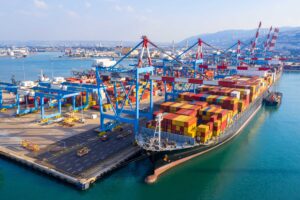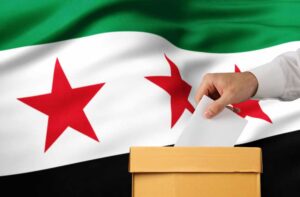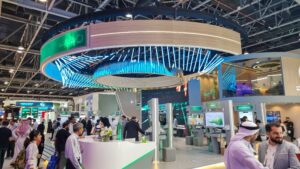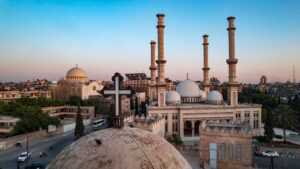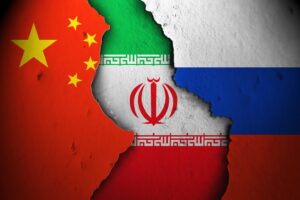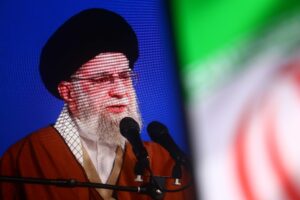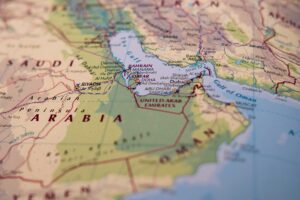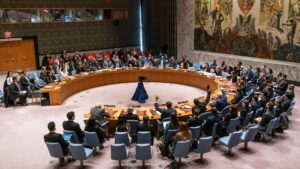Introduction
The region’s cross-border electricity trade efficiency deficits pose challenges.
Climate change is driving transformations towards decarbonization. Almost all technical studies of decarbonized futures conclude that a clean future will be an electric one. In the near future, the world’s electric grids will need to store, and supply, double or triple the amount of electricity used today. Through the lens of climate governance and international affairs, it is already possible to detect the characteristics of probable winners in the unfolding global environmental context. Winners are likely to be those states that control electric power and industrial grid systems, and those that can handle considerably large volumes of power.[i]
While integrated electricity networks are key to advancing the climate agenda and decarbonizing energy, they are also conspicuously political. Some of the far-reaching geopolitical implications linked to the fast tracking of renewables in the global energy transformation include shifts in political relations, and new trade risks and vulnerabilities. Unlike the past when raw resources directed energy trade flows, the shift from fossil fuels to renewables, which is ultimately inevitable, will significantly transform the nature of future trade. Those states leading in energy technologies, and their related components, will drive this future trade[ii] and this is sure to alter global power dynamics. Future state power will be pegged less to traditional forms of it and more to a state’s ability to deploy technological prowess in cooperative energy frameworks and operate, and/or participate in, integrated industrial configurations. Consequently, energy relations are likely to be far more regionalized, thereby representing another means through which the global geopolitical map is changing.[iii]
The shift from fossil fuels to renewables, which is ultimately inevitable, will significantly transform the nature of future trade.
The Middle East and North Africa (MENA) region is set to play a role in energy diversification efforts, which have just become a strategic priority in Europe. In part due to geography, MENA states are well positioned to exploit this development, which complements other climate-linked investments and energy trends. For example, Morocco is developing a solar and wind complex with a 5GW/20GW storage system. By 2027, this will enable Rabat to transfer electricity to the United Kingdom (UK) via a 3,800km undersea pipeline and sell up to 26TWh of electricity to the UK electricity grid.[iv] Trade and investment ties between states are nearly always intertwined with broad political considerations.
While many enthusing energy projects are proposed or underway in the MENA region, the region’s cross-border electricity trade efficiency deficits pose challenges, including limited capacity, missing links, distrust and political instability. In the MENA context, the best prospects for renewable-supplied electrification lie with an expanded Gulf Cooperation Council (GCC) Interconnection. This is because renewable energy exports from North Africa will progress unevenly and slowly. It is also because the GCC has an existing, extensive regional network of energy connections. Beyond expanding the capacity of the GCC Interconnection, Gulf states will most likely see the opportunity and invest in electrical grids to store and export electricity. Leaning into renewables and electrification will help them diversify their economies, create jobs and foster public-private sector partnerships. Aside from also retaining the strategic dividends linked to being energy exporters, the future energy landscape is an opportunity for GCC states[v] to capitalize on an area of strength due to their deep experience with energy production and trade.
States seeking to engage with renewable energy markets are thus going to be inclined to form smaller, webbed inter-state groupings to replace large-scale, globalized energy strategies.
In the context of myriad global transformations, some of which are linked to changes brought on by climate change, GCC states’ engagement with renewables is also a chance for them to secure their place in a changing international order. The Valdai Discussion Club concluded that the potential consequences of climate change for world politics included “bread riots, water wars, an influx of climate migrants, growing tensions in the world and the retailoring of the political landscape.”[vi] New pressures may also stem from more North-South justice and equity disparity, perceived climate ‘spoilers’ undermining international agreements, and threats to critical infrastructure and industrial systems that disrupt global trade flows. This new order will also be driven more by networked and market modes of governance than traditional power hierarchies, which have structured international relations since 1945.[vii] As the rules-based international order slowly retreats, and political relationships become more ad hoc and transactional, the foreseeable unreliability of robust multilateral mechanisms to arbitrate disputes underscores the reasons why future trust in trade partners is likely to erode. This dynamic is congruent with emerging trends in global inter-state relations (e.g. groupings like AUKUS and the ‘Quad’ in the security realm). Combined, states seeking to engage with renewable energy markets are thus going to be inclined to form smaller, webbed inter-state groupings to replace large-scale, globalized energy strategies and trade approaches.
Navigating Decarbonization: Where is the Region Now?
The MENA’s three foremost cross-border electricity connection groupings include: the GCC Interconnection, the Eight-Country Interconnection Project (EIJLLPST) and the Maghreb Interconnection. In addition to the external connections, see figure one, Iran is connected to Pakistan, Afghanistan, Turkmenistan, Azerbaijan and Armenia. [viii]
Main Trade Routes
Founded in 2001, the GCC Interconnection Authority (GCCIA) manages the GCC Interconnection, which was created between 2009 and 2011. This group is the most important connection group, and it has political significance due to geography and usage. All GCCIA connections run through Saudi Arabia, except the UAE-Oman link. Notably, during the 2017-2021 so-called ‘Qatar crisis’, when Saudi Arabia, Bahrain, the UAE and Egypt boycotted Qatar, the GCCIA continued to operate. Use of the GCC grid will probably expand, and proposed connections to Jordan, Egypt and Iraq will allow onward trade in the future.
Without a change in Tehran’s foreign relations Iran will not reach its full potential.
Yet, there are other trade routes that will compete with the GCCIA, although there is opportunity for them to complement it as well. For example, Iran and Qatar’s agreement to connect their electricity grids may enable Tehran to explore opportunities for energy diplomacy and strengthen economic cooperation with other Middle Eastern states. While this has the potential to soothe tense political relations, it could do the reverse too. For example, the Qatar-Iran deal has likely displaced the UAE’s attempt to link up with Iran in the near future—adding to Qatar-UAE tensions. Nevertheless, the Qatar-Iran network connection will allow Iran and Qatar to exchange energy based on their respective consumption requirements, and to better manage seasonal peaks. [ix] Needless to say, however, without a change in Tehran’s foreign relations—and the removal of sanctions that are required to attract foreign investment—Iran will not reach its full potential in the energy sector.
Similarly, there are opportunities and unknown trajectories tied to the trade route from Iran to Iraq. In 2020, Iran exported about 2 gigawatts to Iraq, a significant portion of roughly 19 gigawatts of Tehran’s available electricity, but this fell to 150 megawatts in 2021 due to Iran’s drought-related hydropower shortages, which worsened Iraq’s outage problem.[x] These sorts of circumstances are set to become more frequent and more intense due to the effects of climate change, especially rising temperatures, more drought and increased levels of water scarcity.
Drivers for Interconnection
Evidence showing a need to move toward interconnectivity is mounting and this is driving sustained commitments to undertake new projects (see Table 1). Higher levels of grid interconnection will enhance electricity supply security and allow for more efficiency. Efficiency gains include being able to sell excess green power, which can be traded between states. Recently, the push for additional connectivity has been driven by a desire to avoid over-investment or very costly investments in national power generation and grids. It is also tied to a need to manage (some expected) outages by having enough emergency back-up power stored in grids.[xi]
Rising interconnectivity also has the potential to take advantage of the differences in timing of solar power output and demand peaks over a vast physical landscape without having to rely on costly storage and/or backup systems. The region’s growing global share of renewable energy will boost interconnectivity because it will spread wind and solar power, which are inherently variable and produced over a larger cross-section of states and geographies. This also contributes to climate adaptation and improves resilience to the economic risks posed by power outages, which many Middle Eastern states would benefit from—not least from a human security perspective.
Fuel shortages, underinvestment and sabotage have caused sobering power shortages in several states in the region such as Yemen, Lebanon, Iraq, Syria, and Libya, thus incentivising interconnectivity.
Jordan and Morocco are the only two MENA states to have significant portions of variable renewables. Morocco accounts for roughly three quarters of the region’s renewable electricity production growth.[xii] Its drive to produce and consume green energy will only grow, especially since Algeria closed the Europe-Maghreb pipeline in the fall of 2021 due to heightened political tensions—undoubtedly a wake-up call for Rabat (and Spain). Finally, fuel shortages, underinvestment and sabotage have caused sobering power shortages in several states in the region such as Yemen, Lebanon, Iraq, Syria, and Libya, thus incentivising interconnectivity as well.
Impediments to Interconnectivity
Hydro, wind and solar power on large scales are often physically far from demand centres. Infrastructure investments are at risk of being truncated or postponed due to grid congestion, or lack of finance tied to investor’s concerns about governance or red tape. Algeria is a good example of this despite its effort to improve its investment climate. Expensive investments may also be at risk as a result of weak market access or underdeveloped trade contracts.[xiii] Moreover, the three main interconnection groupings are not linked (EIJLLPST and the Tunisia-Libya link between the Maghreb Interconnection are in the proposal stage). Also, the connections within them typically have small capacity and/or are not well used.
Libya’s political crisis will undermine progress connecting the Maghreb to Europe as the planned Egyptian-Libyan interconnector is unlikely to move forward in near term.
Political instability and tense inter-state relations are features of the region’s security complex that may also hinder or thwart cooperation on electricity flow. Civil wars in Syria and Libya have been impactful, for example. They destroyed infrastructure and contributed to so-called ‘brain drain’ in these states as trained, educated citizens fled the wars. Libya’s political crisis will undermine progress connecting the Maghreb to Europe as the planned Egyptian-Libyan interconnector is unlikely to move forward in near term, not the least because Libya struggles to guarantee payments.[xiv] As the political standoff continues, there is little hope of progress in the short or medium terms. Another dynamic pertains to strained political and diplomatic ties such as those between Israel and many of its neighbours, including Syria and Lebanon that can undermine the ability of states to cooperate across borders.
There are also obstacles related to infrastructure deficits and underinvestment. Iraq’s grid is in need of massive investment while US sanctions on Iran have undermined its power to make progress on this front. Morocco plans to use renewables to penetrate markets in North and Sub-Saharan Africa as well as Europe to deepen interconnections.[xv] This is sure to intensify competition with neighbouring Algeria, which has just announced its own national hydrogen strategy. Cooperative interstate relations and considerable levels of integration are needed to avoid major gaps in connectivity, and this is a marked area of challenge in the MENA region.
Another potential problem is the politicization of renewables and the way politics affects energy-related state behaviour. The US backs the controversial Jordan-Lebanon connection via Syria in part due to its aim of helping Lebanon out of its economic crisis. The plan is contentious because of the US’ continued hostility towards the Assad regime and its sanctions on Syria. In another example, Washington also supports additional electricity supply to Iraq through the GCC, Saudi and Jordanian connections to diminish Baghdad’s reliance on Iran and to improve its political and economic stability. Furthermore, Iraq has found it difficult to pay for Iranian imports, due to financial problems and sanction-related banking issues. Iran has, in turn, taken the liberty to reduce supply at times. There are also technical challenges. For example, Saudi Arabia’s power system operates at a 60-hertz frequency, but other systems the Saudis may want to plug into are at 50 hertz, which increases costs since many of its stations require high-voltage direct-current converters.
Looking Forward
Political actors that control the location, production and storage capacity of electricity production will wield power over others who consume and rely on it.
Certainly, economic diversification priorities in the region are merging with climate-driven action. Despite many obstacles, rising demand for renewable energy, a growing need for electrification and first advantage incentives will likely drive greater interconnectivity levels in the MENA region. This has geopolitical implications, as the political actors that control the location, production and storage capacity of electricity production will wield power over others who consume and rely on it. While the EU is encouraging more MENA electricity exports, particularly from renewable sources in North Africa, prospects for large-scale intercontinental connections will still depend on political stability, as well as the ability of MENA countries to generate a surplus of renewable electricity.[xvi] However, over the past ten years, North Africa’s renewable energy production rose by 40% while capacity to generate renewables grew by 80%.[xvii] The growth trend is almost certain to continue despite impediments, as clear strategic rewards will incentivize continued effort.
Despite the 2017 Qatar crisis being a vivid reminder of how political dynamics can seriously undermine interstate cooperation, the main prospects for the region’s renewable energy developments lay in an expansion of the GCC Interconnection. This is due to the sub-region’s financial resources, port access, natural comparative advantages (e.g. solar), energy trade experience, and existing infrastructure. Above all of this, there is the value in the GCC’s political coordination capacity, which must be seen from a long-term perspective.
The continuing existence of, and growing reasons for, cooperation among Gulf states will drive the preservation of the GCC construct.
Understanding intra-GCC politics at any one time requires acknowledging the history of the six states tending to “fall out, get back together again, and pair off […]”.[xviii] Functional alliances like the GCC have been, and will continue to, engage in various types of disputes with each other.[xix] Omani scholar, Abdulla Baabood, opines that looking forward, many of the same factors that bound and divided the GCC states since its 1981 inception are likely to remain operative.[xx] Accepting Baabood’s view that past successes (and failures) of the GCC will be those of its future, it can be concluded that the continuing existence of, and growing reasons for, cooperation among Gulf states will drive the preservation of the GCC construct—and this will serve them well in the context of the global energy transformation.
Ultimately, in the MENA region, new connections being developed, and those still at the proposal stage, will remain subjected to the limitations associated with political suspicions and conflicts. Furthermore, while shifts in the global energy market strategically and economically expose GCC states to heightened risk, GCC states are best positioned to manage them among MENA states. In the future, there is a strong likelihood that the GCC will keep facilitating economic cooperation, and supporting individual Gulf state development, which has historically enhanced their collective security.[xxi] Indeed, the GCC is the region’s most successful institution of interstate cooperation—even though it is far from perfect—and institutional capacity, technical know-how, and strategic calculations will underscore their advancing electrification agenda.
[i] Victor, D., 2021. The Future of the International System. [online] The Center for Strategic and International Studies (CSIS). Available at: https://www.csis.org/analysis/future-international-system; International Energy Forum, 2021. Algeria Powers Ahead with Huge Renewable Energy Plans. [online] Available at: https://www.ief.org/news/algeria-powers-ahead-with-huge-renewable-energy-plans.
[ii] IRENA (2019a), A New World: The Geopolitics of the Energy Transformation, IRENA, Abu Dhabi.
[iii] International Renewable Energy Agency (IRENA), 2022. Geopolitics of the Energy Transformation The Hydrogen Factor. [online] Available at: https://irena.org/publications/2022/Jan/Geopolitics-of-the-Energy-Transformation-Hydrogen, pp.70-71.
[iv] Octopus Energy. 2022. Octopus Energy backs mega solar farm in Morocco to power 7 million heat pumps with cheap green power. [online] Available at: https://octopus.energy/press/octopus-energy-backsmega-solar-farm-in-morocco-to-power-7-million-heat-pumps-with-cheap-green-power/; 2022. The British company Xlinks is planning to develop a solar and wind power complex in the Moroccan desert. The aim is to produce 10.5 GW of electricity that will be evacuated to the UK via 3,800 km of undersea cables. [online] Available at: https://africantenderpreneur.com/xlinks-to-bring-10-5-gw-of-solar-and-wind-power-to-the-uk-morocco/.
[v] Saudi Arabia, United Arab Emirates, Oman, Kuwait, Qatar and Bahrain.
[vi] Valdai Discussion Club, 2020. How Climate Change Is Shaping International Relations. [online] Available at: <https://valdaiclub.com/a/highlights/how-climate-change-is-shaping-international-relations/>.
[vii] See: Barnett, M. and Pevehouse, J., 2021. Global Governance in a World of Change. Cambridge University Press.
[viii] Shokri, U., 2022. The Geopolitics of Iran-Qatar Electricity Grid Connection. [online] Carnegie Endowment for International Peace. Available at: https://carnegieendowment.org/sada/87012?s=03.
[ix] Shokri, U., 2022. The Geopolitics of Iran-Qatar Electricity Grid Connection. [online] Carnegie Endowment for International Peace. Available at: https://carnegieendowment.org/sada/87012?s=03.
[x] Oxford Analytica, 2022. Electricity trade in the Middle East will grow slowly. [online] Daily Brief. Available at: https://dailybrief.oxan.com/Analysis/DB267507/Electricity-trade-in-the-Middle-East-will-grow-slowly.
[xi] Oxford Analytica, 2021. Long-distance electricity transmission will increase. [online] Daily Brief. Available at: https://dailybrief.oxan.com/Analysis/DB265416.
[xii] International Energy Agency (IEA), 2022. North Africa’s pathways to clean energy transitions. [online] Available at: https://www.iea.org/commentaries/north-africa-s-pathways-to-clean-energy-transitions.
[xiii] Oxford Analytica. “Long-distance electricity transmission will increase.” 17 November 2021.
[xiv] Oxford Analytica, 2021. Long-distance electricity transmission will increase. [online] Daily Brief. Available at: https://dailybrief.oxan.com/Analysis/DB265416.
[xv] International Energy Agency (IEA), 2022. North Africa’s pathways to clean energy transitions. [online] Available at: https://www.iea.org/commentaries/north-africa-s-pathways-to-clean-energy-transitions; International Renewable Energy Agency (IRENA), 2021. Morocco and IRENA Partner to Boost Renewables and Green Hydrogen Development. [online] Irena.org. Available at: https://www.irena.org/newsroom/pressreleases/2021/Jun/Morocco-and-IRENA-Partner-to-Boost-Renewables-and-Green-Hydrogen-Development; Diab, K., 2021. There are grounds for concern about solar power. [online] Aljazeera.com. Available at: https://www.aljazeera.com/opinions/2021/4/7/there-are-grounds-for-concern-about-solar-power.
[xvi] Oxford Analytica, 2022. Electricity trade in the Middle East will grow slowly. [online] Daily Brief. Available at: https://dailybrief.oxan.com/Analysis/DB267507/Electricity-trade-in-the-Middle-East-will-grow-slowly.
[xvii] International Energy Agency, 2022. North Africa’s pathways to clean energy transitions. [online] Available at: https://www.iea.org/commentaries/north-africa-s-pathways-to-clean-energy-transitions
[xviii] Martini, Jeffrey, Becca Wasser, Dalia Dassa Kaye, Daniel Egel, and Cordaye Ogletree.
“The Outlook for Arab Gulf Cooperation”. Santa Monica, California: RAND Corporation, p.xi.
[xix] Miller, Rory. 2019. “Managing Regional Conflict: The Gulf Cooperation Council and the Embargo of Qatar”. Global Policy 10 (S2): 36-45. doi:10.1111/1758-5899.12674.
[xx] Baabood, Abdulla. 2019. “The Future of the GCC Amid the Gulf Divide”. In Divided Gulf:The Anatomy of a Crisis, 161-178. New York: Palgrave.
Baabood, Abdullah. 2019. “The Gulf Cooperation Council (GCC) and its Future Prospects”.
GCC: Evaluation, Lessons Learned and Future Prospects. IMEIS Annual Conference.
2019: Global Policy Journal. https://www.dur.ac.uk/sgia/about/news/?itemno=38832.
[xxi] Worrall, James. 2017. International Institutions of the Middle East. New York: Routledge; Hudson, Michael. 2015. Gulf Politics and Economics in A Changing World. World.
Strategies, And Implications. Brookings Institution Press.


